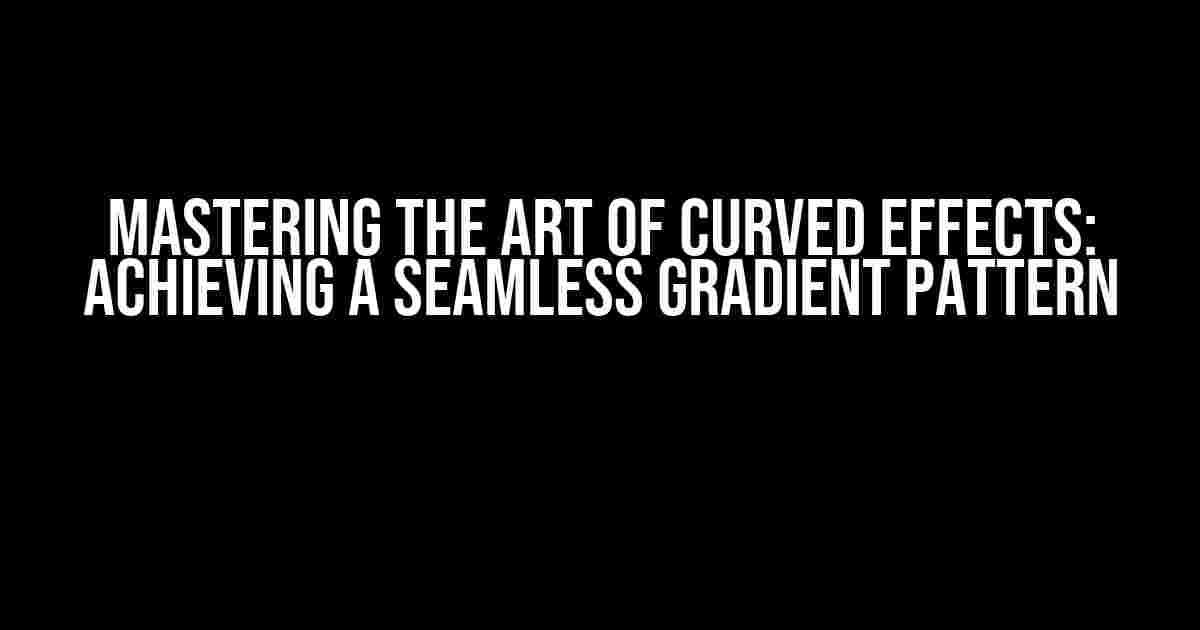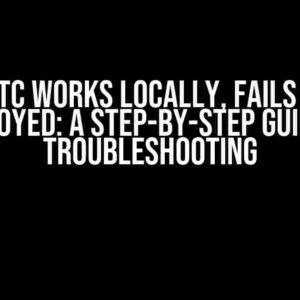Are you tired of sacrificing your gradient pattern for a curved bottom effect? Do you want to add a touch of elegance to your webpage without compromising on design? Look no further! In this article, we’ll dive into the world of CSS mastery, exploring the secret techniques to achieve a stunning curved effect at the bottom of your page without resetting your gradient pattern.
Understanding the Problem: The Gradient Pattern Conundrum
When it comes to designing a webpage, one of the most significant challenges is balancing aesthetics with functionality. A gradient pattern can add a touch of sophistication to your design, but what happens when you want to introduce a curved effect at the bottom of your page? The usual solution is to reset the gradient pattern, but this can be frustrating, especially if you’ve spent hours perfecting your design.
The Root of the Problem: The Box Model
The box model is the fundamental building block of CSS layout. It consists of the content area, padding, border, and margin. When you apply a background image or gradient to an element, it gets applied to the content area. However, when you want to add a curved effect to the bottom of your page, you need to manipulate the border radius, which affects the entire element, including the gradient pattern.
This is where the problem arises. When you add a border radius to an element with a gradient pattern, the gradient gets distorted, and you’re left with an unappealing, curved mess. So, how can you achieve a curved effect without sacrificing your gradient pattern?
Solution 1: Using a Pseudo-Element
One of the most creative solutions to this problem is using a pseudo-element. A pseudo-element is a fictional element that allows you to add additional styles to an element without affecting its actual content. In this case, we’ll use the `::before` pseudo-element to create a curved shape that overlays our gradient pattern.
.curved-bottom {
background-image: linear-gradient(to bottom, #ff69b4, #ffd7be);
background-size: 100% 300px;
background-position: 0% 100%;
height: 300px;
position: relative;
}
.curved-bottom::before {
content: "";
position: absolute;
bottom: 0;
left: 0;
width: 100%;
height: 50px;
background-color: #fff;
border-radius: 50% 50% 0 0;
}
In this example, we’ve added a gradient pattern to the `.curved-bottom` element and set its height to 300px. We then create a pseudo-element with the `::before` selector and position it absolutely at the bottom of the parent element. The pseudo-element has a height of 50px, a width of 100%, and a border radius of 50% on the top-left and top-right corners, creating a curved shape.
Advantages and Limitations
Using a pseudo-element is a clever way to achieve a curved effect without distorting your gradient pattern. The advantages of this method include:
- Easy to implement
- Works with linear and radial gradients
- Compatible with most browsers
However, there are some limitations to consider:
- The curved shape is limited to the pseudo-element’s height and width
- May not work well with complex gradient patterns
- Requires additional markup and CSS
Solution 2: Using a Separate Element
Another approach is to create a separate element that wraps around the curved shape, allowing you to maintain your gradient pattern intact. This method involves adding an additional HTML element and applying CSS styles to achieve the desired effect.
<div class="curved-bottom-wrap">
<div class="curved-bottom">
<!-- Gradient pattern here -->
</div>
</div>
.curved-bottom-wrap {
overflow: hidden;
height: 300px;
}
.curved-bottom {
background-image: linear-gradient(to bottom, #ff69b4, #ffd7be);
background-size: 100% 300px;
background-position: 0% 100%;
height: 300px;
border-radius: 0 0 50% 50%;
}
In this example, we’ve added a wrapper element `.curved-bottom-wrap` that contains the `.curved-bottom` element with the gradient pattern. We set the wrapper element’s `overflow` property to `hidden` and its `height` to 300px. The `.curved-bottom` element has a border radius of 50% on the bottom-left and bottom-right corners, creating a curved shape.
Advantages and Limitations
Using a separate element has its advantages:
- More flexibility in terms of curved shape and gradient pattern
- Easier to maintain and update
- Works well with complex gradient patterns
However, there are some limitations to consider:
- Requires additional HTML markup
- May add complexity to your design
- Not as elegant as using a pseudo-element
Solution 3: Using an SVG Curve
If you’re looking for a more advanced solution, you can use an SVG curve to create a curved effect at the bottom of your page. This method involves using an SVG element and applying CSS styles to achieve the desired effect.
<svg viewBox="0 0 100 100">
<path d="M 0 100 C 20 100, 40 90, 60 90 L 100 90 C 80 90, 60 100, 40 100 Z" />
</svg>
.curved-bottom {
background-image: linear-gradient(to bottom, #ff69b4, #ffd7be);
background-size: 100% 300px;
background-position: 0% 100%;
height: 300px;
position: relative;
}
.curved-bottom svg {
position: absolute;
bottom: 0;
left: 0;
width: 100%;
height: 50px;
fill: #fff;
}
In this example, we’ve added an SVG element with a curved path that follows the desired shape. We then position the SVG element absolutely at the bottom of the parent element, setting its width to 100% and height to 50px. The `fill` property is set to `#fff` to match the background color.
Advantages and Limitations
Using an SVG curve has its advantages:
- Highly customizable curved shape
- Works well with complex gradient patterns
- Easy to maintain and update
However, there are some limitations to consider:
- Requires knowledge of SVG syntax
- May not work well with older browsers
- Can be challenging to implement
Conclusion
Achieving a curved effect at the bottom of your page without resetting your gradient pattern is a challenge that requires creativity and CSS mastery. In this article, we’ve explored three solutions to this problem: using a pseudo-element, a separate element, and an SVG curve. Each method has its advantages and limitations, and the choice of solution depends on your specific design requirements.
By mastering these techniques, you’ll be able to add a touch of elegance to your webpage design, creating a seamless and visually stunning curved effect that enhances your gradient pattern.
| Solution | Advantages | Limitations |
|---|---|---|
| Pseudo-Element | Easy to implement, works with linear and radial gradients, compatible with most browsers | Limited curved shape, may not work well with complex gradient patterns |
| Separate Element | More flexibility in curved shape and gradient pattern, easier to maintain and update | Requires additional HTML markup, may add complexity to design |
| SVG Curve | Highly customizable curved shape, works well with complex gradient patterns, easy to maintain and update | Requires knowledge of SVG syntax, may not work well with older browsers, can be challenging to implement |
Now that you’ve mastered the art of curved effects, go ahead and experiment with different gradient patterns and curvedHere are 5 questions and answers about achieving a curved effect at the bottom of a page without resetting the gradient pattern:
Frequently Asked Question
Get ready to level up your design game with these nifty tricks!
Can I use a single gradient element with a curved bottom?
Unfortunately, no. A single gradient element will not produce a curved effect at the bottom. But don’t worry, we’ve got some workarounds for you!
What’s the simplest way to achieve a curved effect without resetting my gradient pattern?
One solution is to add a separate HTML element with a curved border-radius, placed on top of the gradient element. This will create the illusion of a curved bottom without affecting the gradient pattern.
How do I make sure the curved element blends seamlessly with the gradient?
To achieve a smooth transition, make sure the curved element has the same background color as the bottom of your gradient. You can also add a subtle box-shadow to enhance the effect.
Can I use CSS masks to create a curved effect?
Yes, you can! CSS masks allow you to define a mask shape that can be applied to an element. In this case, you can create a curved mask to achieve the desired effect. Just be aware that browser support might be limited.
Are there any limitations to these workarounds?
These solutions might not work perfectly when your gradient pattern is extremely complex or when you need to support older browsers. In such cases, it might be better to reset the gradient pattern or explore other design options.






